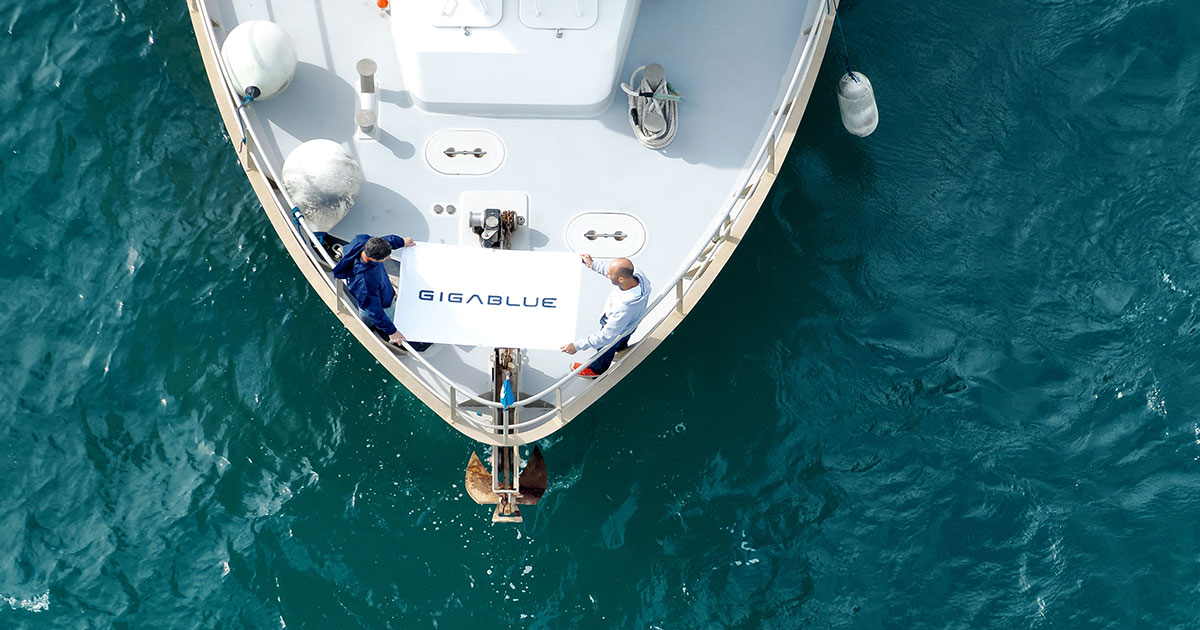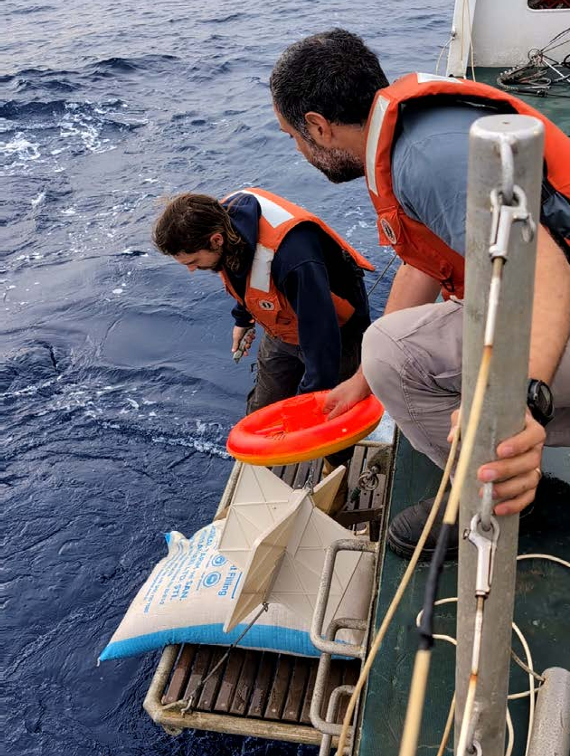
Harnessing Nature-Driven Carbon Capture and Removal
The removal of atmospheric carbon from the ocean and sequestering it in safe and secure reservoirs has emerged as one of the most cost- effective ways to sustainably address anthropogenic climate challenges. The premise was born out of the introduction of marine carbon dioxide removal (mCDR) in the late 1970s, but the challenges associated with modeling, scaling, and creating ocean-based sequestration pathways have proved insurmountable. Until now.
MCDR approaches have proposed various methods and outcomes, from artificial upwelling to ocean alkalinity enhancement and electrochemical systems, algae farming to ocean fertilization. But here, we focus on harnessing the immense potential of the biggest reservoir for carbon dioxide—the deep ocean—where carbon is stored within the slow cycle and the sediment for up to thousands of years. Gigablue effectively exports CO2 to the deep ocean for thousands of years, using contained microalgae growth in engineered particles. These particles create the conditions for organic carbon to be sequestered as they sink to the seafloor in selected areas, ensuring high permanency and durability.
However, ensuring that organic carbon reaches the seafloor—escaping the process of remineralization where respiration by other organisms turns organic carbon back into carbon dioxide—is no easy feat, but one that allows Gigablue to stand out in the mCDR landscape with highly reliable measurability, based on ground-truth in-situ samples.
Science-Backed Technology
Through a novel combination of artificial intelligence (AI) tools and biogeochemistry, Gigablue has unlocked the capability to leverage the ocean’s potential for carbon sequestration. At its core, Gigablue enlists geo-specific particles, an integrated oceanography platform, and AI optimization to produce a solution calibrated to maximize CDR outcomes. The integrated oceanography platform targets areas of the ocean that are ideal for performing marine CDR.

In-situ experiment testing the behavior of an analog to the gravity-controlling core in real oceanic conditions. (Image credit: Gigablue)
Gigablue effectively exports CO2 to the deep ocean for thousands of years using engineered particles with a gravity-controlling core. These particles are specifically designed to ensure that carbon is sequestered effectively and durably. The gravity core allows the particles to sink rapidly and predictably to the ocean floor, minimizing the chance of remineralization, where organic carbon is converted back to CO2.
Utilizing oceanographic data and forecast model predictions, Gigablue determines the optimal deployment locations and conditions. Once released, the particles offer an ideal environment for phytoplankton growth, ensuring additional carbon fixation through photosynthesis beyond what naturally occurs in the water. Over time, the gravity core ensures that the particles, along with the fixed carbon, are transported to the deep ocean, where they are stored durably.
Data Validation
Baseline data and regulation pathways continue to present some of the greatest hurdles in enabling marine CDR to make a significant impact on global warming as part of the fight against climate change. Verifying CDR methods and providing proof-of-concept validation relies on the precise collection, processing, and analysis of scientifically defensible ocean data.
Recently, Gigablue enlisted the marine survey expertise of CSA Ocean Sciences Inc. (CSA) to provide scientific and technical planning support for the first in-situ experiments of Gigablue’s carbon removal technology. CSA carried out the vital monitoring of the engineered carbon-sequestering particles and provided data-rich insights on the behavior of the particle’s descent and plume movement through the water column. Through the combined use of a remotely operated vehicle (ROV), echosounders, and CARTHE (Consortium for Advanced Research on Transport of Hydrocarbon in the Environment) Drifters, CSA’s subject matter experts (SMEs), and experienced field teams executed a series of tests to assess Gigablue’s design for monitoring CDR particles with the methods tested in the field.
“The reporting and verification of measurements performed using certified industry-standard equipment and techniques are instrumental steps in the creation of a data-led and systematic approach to scaling commercial carbon sequestration and storage in the ocean,” commented CSA Project Manager Elad Mills. “With our ongoing investment in leading subject matter experts and applied marine science technologies, CSA continues to provide best-in-class data for critical ocean-based decision making.”
A Negative Emission Solution
Equipped with verifiable data and a proven concept, Gigablue’s attention now turns to bringing effective, affordable, and robust CDR solutions to commercial entities and government agencies alike at scale. With the ability to remove a gigaton of CO2 per year, this method and technology far surpass other proposed CDR pathways in terms of measurability, durability, environmental integrity, and cost- effectiveness.
Gigablue expects its third ocean deployment to occur by the end of 2024 off the coast of New Zealand.
To find out more about Gigablue, visit: www.gigablue.co
To find out more about CSA Ocean Sciences, visit: www.csaocean.com
This feature appeared in Environment, Coastal & Offshore (ECO) Magazine's 2024 Autumn edition Sampling & Survey, to read more access the magazine here.
Corporate Headquarters
8502 SW Kansas Ave.
Stuart, FL 34997

